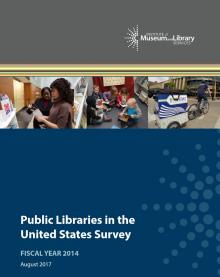
Public Libraries in the United States Survey: Fiscal Year 2014
The Public Libraries in the United States Survey (PLS) examines when, where, and how library services are changing to meet the needs of the public. This FY 2014 PLS summarizes the reported data provided by 97.4 percent of public libraries and outlets in the United States.
Links
News Release - September 14, 2017
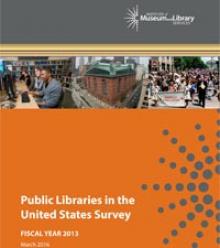
Public Libraries in the United States Survey: Fiscal Year 2013
The Public Libraries in the United States Survey (PLS) examines when, where, and how library services are changing to meet the needs of the public. These data, supplied annually by more than 97 percent of public libraries across the country, provide information that policymakers and practitioners can use to make informed decisions about the support and strategic management of libraries.

Public Libraries in the United States Survey: Fiscal Year 2012
The Public Libraries in the United States Survey (PLS) examines when, where, and how library services are changing to meet the needs of the public. These data, supplied annually by more than 97 percent of public libraries across the country, provide information that policymakers and practitioners can use to make informed decisions about the support and strategic management of libraries.
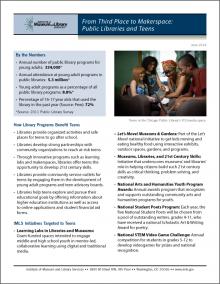
Talking Points: From Third Place to Makerspace: Public Libraries and Teens
A snapshot of how public libraries reach out to teens with programs and services.
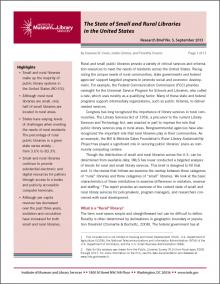
Research Brief No. 5: The State of Small and Rural Libraries in the United States
Rural and small public libraries in the United States are community anchors, providing critical services and resources to meet a variety of local needs. This brief provides the agency’s first targeted analysis of trends for rural and small library services.
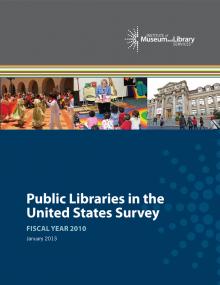
Public Libraries in the United States Survey: Fiscal Year 2010
The Public Libraries in the United States Survey report analyzes data supplied annually by over 98% of public libraries across the country. This year’s report features nine performance indicators and examines differences in library service at the locality levels (city, suburb, town, rural and national).
Links
Public Libraries in the United States Survey: Fiscal Year 2010 Download report (PDF; 3.7MB)

Public Libraries in the United States: Fiscal Year 2009
This report includes national and state summary data on public libraries in the 50 states and the District of Columbia, with an introduction, selected findings, and several tables. The report, based on data from the Public Libraries Survey for fiscal year 2009, includes information on visitation, circulation, the availability and use of library computing resources, staffing, library collections and services, and fiscal information such as operating revenue and expenditures.
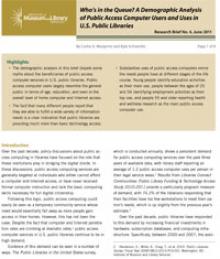
Research Brief No. 4: Who is in the Queue: Public Access Computer Users
This brief provides a demographic analysis of public access computer users and uses and demonstrates that public libraries are providing much more than basic technology access.
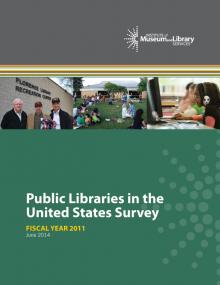
Public Libraries in the United States Survey: Fiscal Year 2011
The Public Libraries in the United States Survey (PLS) examines when, where, and how library services are changing to meet the needs of the public. These data, supplied annually by more than 97 percent of public libraries across the country, provide information that policymakers and practitioners can use to make informed decisions about the support and strategic management of libraries.

Public Libraries in the United States: Fiscal Year 2008
This report includes national and state summary data on public libraries in the 50 states and the District of Columbia, with an introduction, selected findings, and several tables. The report, based on data from the Public Libraries Survey for fiscal year 2008, includes information on visitation, circulation, the availability and use of library computing resources, staffing, library collections and services, and fiscal information such as operating revenue and expenditures.